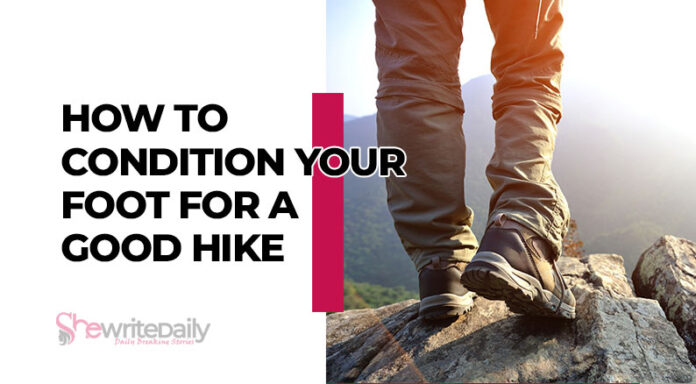Hiking is a wonderful way to reconnect with nature and challenge yourself physically. However, to fully enjoy your hiking experience, it is essential to prioritize foot health and ensure your feet are well-prepared for the journey ahead. This article will guide you through the process of conditioning your feet for a good hike, from pre-hike preparation to post-hike foot care.
Prioritizing Foot Health
Your feet play a crucial role in your hiking performance. They provide the necessary support, stability, and balance required to navigate varying terrains. Neglecting foot health can lead to discomfort, pain, and even injuries that can hamper your hiking adventures.
Over time, common foot issues such as blisters, calluses, arch pain, and even crooked toes can develop, hindering your ability to hike comfortably. What are crooked toes?
Crooked toes encompass a range of toe abnormalities where one or more toes bend or curl in abnormal positions. This can result in pain, discomfort, and difficulty finding properly fitting footwear.
Before hitting the trails, it’s crucial to understand the significance of foot health and how it can impact your hiking performance. We’ll delve into the common foot issues that can develop over time, highlighting the importance of addressing them to prevent discomfort and injuries.
Preparing Your Feet for Hiking
To ensure your feet are ready for the challenges of hiking, there are three key steps you should take: choosing the right footwear and socks, gradually increasing walking and hiking distances, and incorporating strengthening exercises for the feet and lower legs. Let’s explore each of these in detail:
- Choosing the right footwear and socks: Invest in high-quality hiking boots or shoes that offer proper arch support and protection. If you’re experiencing heel discomfort due to conditions like Achilles tendonitis, shin splints, or plantar fasciitis, using heel cups in your flat footwear could serve as a temporary relief.
- Gradually increase walking and hiking distances: Start by walking shorter distances and gradually increase your mileage over time. This allows your feet and lower legs to adapt to the demands of hiking, building endurance and reducing the risk of overuse injuries.
- Strengthening exercises for the feet and lower legs: Incorporate exercises such as toe curls, calf raises, and ankle rolls into your routine. These exercises help strengthen the muscles in your feet and lower legs, improving stability and reducing the likelihood of foot fatigue.
Foot Care During Hikes
Taking care of your feet during hikes is essential to ensure comfort and prevent foot-related problems. In this section, we will explore two important aspects of foot care during hikes: preventing blisters and hot spots, and the significance of rest breaks and foot care routines.
- Preventing blisters and hot spots: To minimize the risk of blisters, wear well-fitted boots or shoes and moisture-wicking socks. Consider using moleskin for blisteror blister prevention patches on areas prone to friction. It’s also helpful to keep your feet clean and dry, changing into dry socks if necessary.
- Importance of rest breaks and foot care routines: Take regular breaks during your hike to give your feet a chance to rest and recover. During these breaks, remove your boots and socks to air out your feet and inspect them for any developing issues. Consider massaging your feet and performing gentle stretching exercises to alleviate tension.
Post-Hike Foot Recovery and Care
After a rewarding hike, it’s crucial to prioritize the recovery and care of your feet. In this section, we will explore two important aspects: foot relaxation and recovery, and a foot care routine.
- Foot relaxation and recovery: After a hike, elevate your feet to reduce swelling and promote circulation. Soaking your feet in warm water with Epsom salt can help relieve soreness. Additionally, using a foot roller or tennis ball to massage the soles of your feet can provide relief and enhance recovery.
- Foot care routine: Clean and dry your feet thoroughly after each hike to prevent fungal infections. Apply moisturizer to keep the skin hydrated and prevent dryness. If you notice any blisters, treat them appropriately to prevent infection and aid in healing.
Conclusion
Properly conditioning your feet is essential for a rewarding and enjoyable hiking experience. By prioritizing foot health, selecting appropriate footwear, gradually increasing distances, and practicing foot care during and after hikes, you can minimize foot-related problems and maximize your enjoyment of the great outdoors. Remember, a well-prepared foot will carry you further on your hiking adventures.


